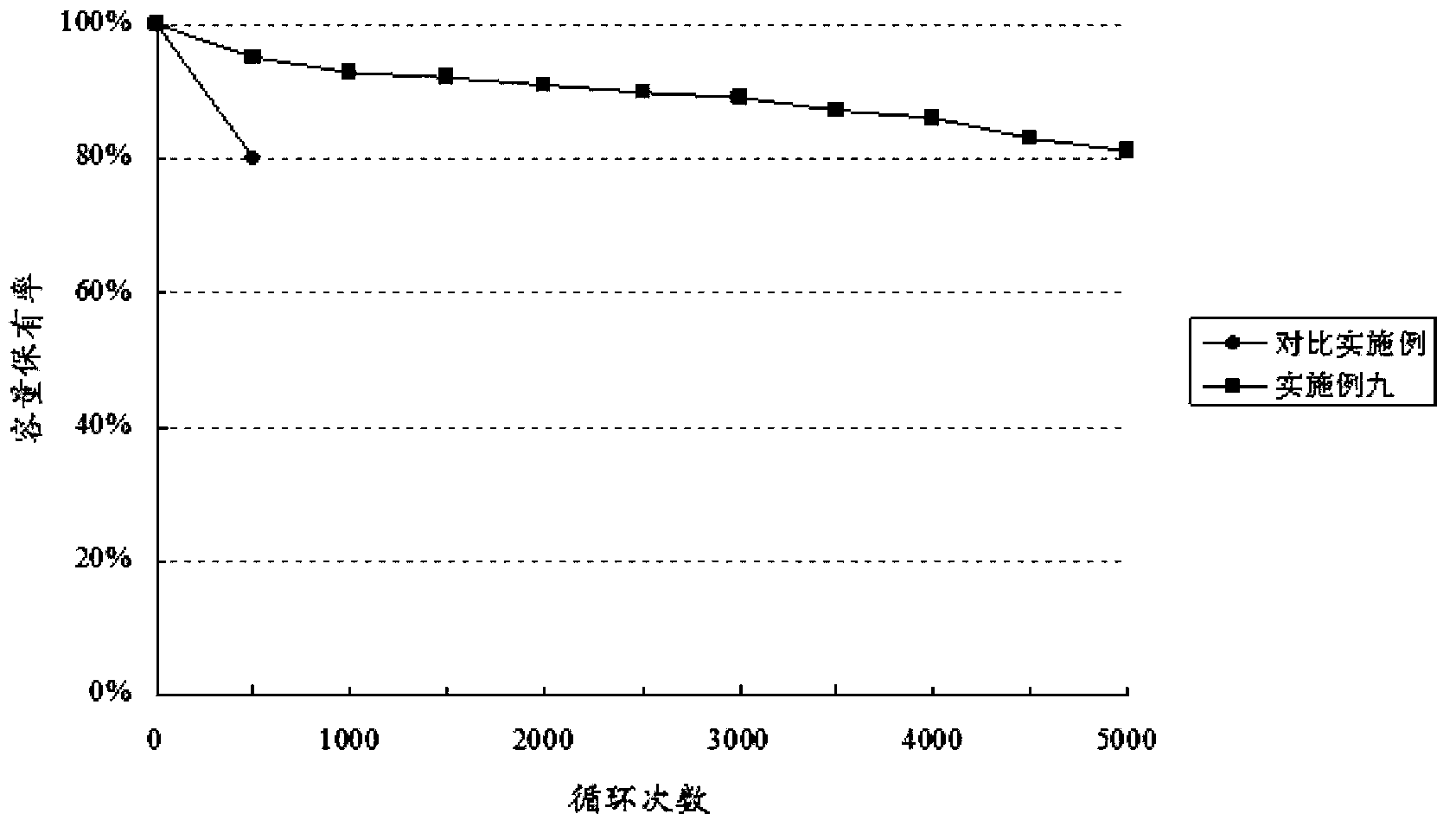Lead carbon battery cathode diachylon as well as preparation method thereof, lead carbon battery cathode plate as well as lead carbon battery
A technology of lead-carbon battery and negative electrode paste, which is applied in the field of electrochemical power supply, can solve the problems of short cycle life, achieve the effects of prolonging service life, easily obtaining raw materials, and slowing down the sulfation phenomenon
- Summary
- Abstract
- Description
- Claims
- Application Information
AI Technical Summary
Problems solved by technology
Method used
Image
Examples
preparation example Construction
[0066] In addition, the present invention also provides a preparation method of lead-carbon battery negative electrode paste, comprising the following steps:
[0067] (1) Take 100 parts of lead powder, 0.1~2 parts of barium sulfate, 0.01~2 parts of hydrogen evolution inhibitor, 50~100 parts of graphene oxide, 0.05~1 part of acetylene black, 1~4 parts of humic acid, 5~ Pour 15 parts and 0.1~0.2 parts of short fiber into the container, stir evenly to get the mixture;
[0068] (2) Add 12 to 21 parts of water to the mixture, stir well, then add 4 to 100 parts of sulfuric acid under stirring conditions, and stir for 10 to 20 minutes;
[0069] (3) Add 0.1-8 parts of binder to the sulfuric acid-treated mixture, stir evenly, and control the apparent density of the mixed colloid to be 3.5-4.5 g / ml to obtain lead-carbon battery negative electrode lead paste.
[0070] The hydrogen evolution inhibitor in step (1) is at least one of indium oxide, bismuth oxide, stearic acid, barium steara...
Embodiment 1
[0105] A preparation method of lead-carbon battery negative electrode paste, comprising the following steps:
[0106](1) Take 100 parts of lead powder, 0.1 part of barium sulfate, 0.01 part of hydrogen evolution inhibitor, 50 parts of graphene oxide, 0.05 part of acetylene black, 1 part of humic acid, 5 parts of red lead, and 0.1 part of short fiber into the container , and stirred for 10 minutes to fully mix the components to obtain a mixture; wherein, the hydrogen evolution inhibitor is indium oxide, and the specific surface area of the graphene oxide is 100m 2 / g, the conductivity is 10 -6 s / cm, the oxygen content is 10%, and the short fiber is nylon;
[0107] (2) Weigh 12 parts of deionized water, quickly pour the deionized water into the mixture obtained in step (1) within 1 minute, and stir for 10 minutes; then slowly add the deionized water with a density of 1.1g / cm 3 4 parts of sulfuric acid, pay attention to control the speed of adding sulfuric acid not too fast, ...
Embodiment 2
[0116] A preparation method of lead-carbon battery negative electrode paste, comprising the following steps:
[0117] (1) Take 100 parts of lead powder, 0.2 parts of barium sulfate, 0.1 part of hydrogen evolution inhibitor, 60 parts of graphene oxide, 0.1 part of acetylene black, 1.5 parts of humic acid, 6 parts of red lead, and 0.12 parts of short fiber into the container , stirred for 15 minutes, fully mixed each component to obtain a mixture; wherein, the hydrogen evolution inhibitor is bismuth oxide, and the specific surface area of the graphene oxide is 200m 2 / g, the conductivity is 10 -5 s / cm, oxygen content is 12%, and described short fiber is acrylic fiber;
[0118] (2) Weigh 13 parts of deionized water, quickly pour the deionized water into the mixture obtained in step (1) within 1 minute, and stir for 15 minutes; then slowly add the deionized water with a density of 1.1g / cm 3 10 parts of sulfuric acid, pay attention to control the speed of adding sulfuric acid...
PUM
| Property | Measurement | Unit |
|---|---|---|
| density | aaaaa | aaaaa |
| specific surface area | aaaaa | aaaaa |
| specific surface area | aaaaa | aaaaa |
Abstract
Description
Claims
Application Information
 Login to View More
Login to View More - R&D
- Intellectual Property
- Life Sciences
- Materials
- Tech Scout
- Unparalleled Data Quality
- Higher Quality Content
- 60% Fewer Hallucinations
Browse by: Latest US Patents, China's latest patents, Technical Efficacy Thesaurus, Application Domain, Technology Topic, Popular Technical Reports.
© 2025 PatSnap. All rights reserved.Legal|Privacy policy|Modern Slavery Act Transparency Statement|Sitemap|About US| Contact US: help@patsnap.com

